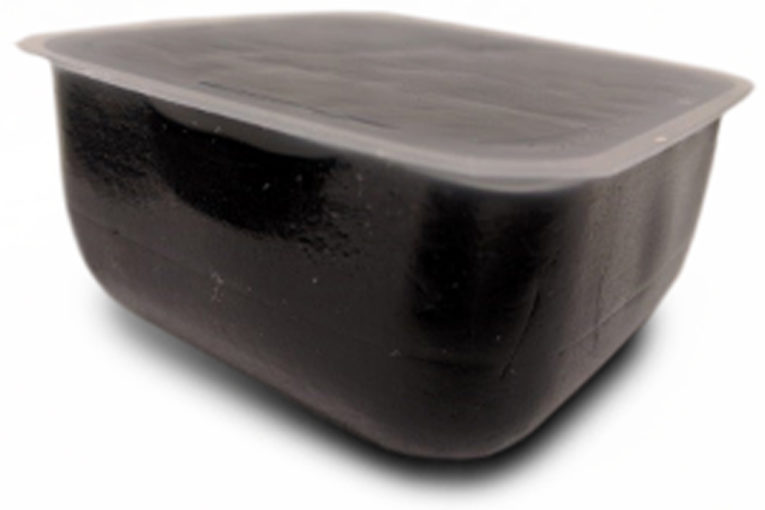
TSUU T’INA, Alta. – Plans to turn Alberta bitumen into solid pucks could save the province’s oil producers US$15 per barrel and use up the plastic that now ends up in provincial landfills.
CN Rail and Wapahki Energy Ltd., a company owned by the Heart Lake First Nation in northern Alberta, hope to break ground on a $50 million facility to turn 10,000 barrels of bitumen per day into CanaPux, a solid brick-like creation of CN that is easier to move on railway cars than oil and can be exported from the West Coast using existing coal ports.
Speaking Thursday at the Indigenous Energy Summit on the Tsuu T’ina Nation reserve at the edge of Calgary, representatives from CN Rail and Wapahki said they would each invest $16.7 million into the pilot project that would take two years to build. They are currently in talks to bring on an additional partner for the remaining cost of the project.
“We’re solving market access issues for Canada,” said CN Rail senior manager of product development James Auld of CanaPux, which are squares roughly the size of a yogurt container that smell like freshly poured asphalt.
CN began developing CanaPux three years ago by blending bitumen with a small amount of plastic to make pucks, which can float in water given the lightness of the plastic.
The pucks, Auld said, can be loaded onto railway hopper cars, which normally carry products like grain or coal, rather than tank cars, which carry products such as oil or chlorine. As a result, one railway car could move 650 barrels of oil in puck form, compared with a tanker car that can carry 500 barrels of oil.
Costs would also drop. Current demand for tanker cars has driven the price to lease the units up to $3,500 per month, compared with $350 per month for a hopper car.
Amid delays for new pipelines, shipments of oil by rail jumped 115 per cent from 151,940 barrels per day in December 2017 to 327,229 barrels per day at the end of October 2018, the last month for which National Energy Board data is available.
Turning bitumen into pucks would also eliminate the need for producers to spend money on diluent, a blending agent that is necessary to lighten the viscosity of bitumen to the point where it can flow through a pipeline.
(Pucks improve) the netback to the producer by approximately $15 per barrel
Alfred Fischer, senior advisor, Sproule Associates
“It improves the netback to the producer by approximately $15 per barrel,” said Alfred Fischer, a senior advisor with Sproule Associates, who is working on the project.
Fischer joked that the Wapahki and CN Rail should hang up a sign in Prince Rupert, B.C. saying, “We buy ocean plastic for $5 per pound.”
The facility would combine low-density polyethylene found in such products as plastic grocery bags with bitumen and use up to 300 tonnes of plastic per day. The plan is to use waste plastic to make the bitumen pucks and, Fischer said, the facility would use up all of the plastic collected in the province.
“We’re diverting from landfills plastics that would otherwise be remaining in landfills,” said Jeff Paquin, president and CEO of Wapahki Energy.
He said the First Nations-owned company plans to built a standalone plastics processing facility in northern Alberta and expects to source plastics from beyond the province.
We’re diverting from landfills plastics that would otherwise be remaining in landfills
Jeff Paquin, CEO, Wapahki Energy
Paquin said that smaller oil producers in northern Alberta were excited about the technology because they are among the most heavily impacted companies from volatile swings in the price of Western Canada Select driven by a lack of pipeline export capacity.
The lack of pipeline capacity out of Alberta caused sharp swings in the value of Canadian oil blends at the end of 2018, which at times caused the discount for Western Canada Select benchmarks to reach a record of US$50 per barrel.
With the decline in provincial revenues from oil royalties, Alberta Premier Rachel Notley took the unprecedented step of forcing the province’s largest oil producers to curtail production in a bid to lift prices.
Alberta Energy Minister Marg McCuaig-Boyd told reporters on the sidelines of the Indigenous Energy Summit on Wednesday that the curtailment has had its desired effect, but wouldn’t provide an end date for the order.
McCuaig-Boyd said the province was monitoring the situation “month by month” to set curtailment numbers for producers and to monitor when the order might end.
• Email: [email protected] | Twitter: geoffreymorgan
You can read more of the news on source
